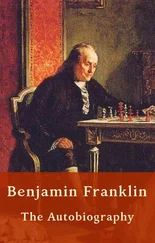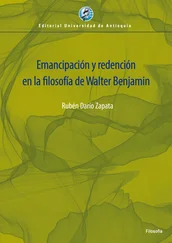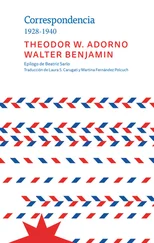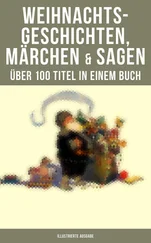And on this tapestry’s flourishing seam
the laughing villages prosper and teem:
Linow, Lindow,
Rhinow, Glindow,
Beetz and Gatow,
Dreetz and Flatow,
Bamme, Damme, Kriele, Krielow,
Petzow, Retzow, Ferch am Schwielow,
Zachow, Wachow and Groß Behnitz,
Marquardt-Uetz at Wublitz-Schlänitz,
Senzke, Lentzke, and Marzahne,
Lietzow, Tietzow, and Reckahne,
And lastly a garland of lively haunts:
Ketzin, Ketzür, and Vehlefanz. 11
“Fontanes ‘Wanderungen durch die Mark Brandenburg,’ ” GS, 7.1, 137–45. Translated by Jonathan Lutes.
The exact date of broadcast is unknown, but the text appears to belong to Benjami n’s broadcasts for Radio Berli n’s children and youth programming on the Berlin Hour, and was most likely produced in 1929 or 1930.
1This title was provided by the editors of the GS. Benjamin’s typescript does not have a title.
2The Mark Brandenburg is a German state surrounding Berlin. It is sometimes translated as the March or Margraviate of Brandenburg, from Markgrafschaft Brandenburg.
3The Wandervogel (“wandering bird”) was a popular German youth movement started at the turn of the century. It promoted excursions in nature as a salutary, community-building alternative to urban life.
4Caspar David Friedrich (1774–1840), German Romantic painter known for his desolate, haunted landscapes; Carl Blechen (1798–1840), German landscape painter.
5Fontane’s Wanderungen durch die Mark Brandenburg was originally published in five volumes from 1862 to 1889.
6Fontane, Wanderungen, eds. Gotthard Erler and Rudolf Mingau, Part 1: “Die Grafschaft Ruppin” [County Ruppin] (Berlin: Aufbau, 1976), 1–3. For this passage, as well as for the subsequent references to Fontane, Benjamin’s typescript does not provide full quotations. We follow the editors of the GS, who provided the passages based on Benjamin’s notations.
7Ibid., Part 3: “Havelland. Die Landschaft um Spandau, Potsdam, Brandenburg” [Havelland: The Region around Spandau, Potsdam, Brandenburg], 1977, 437–9.
8Radio photography ( Bildfunk ) was a term used for an early form of television. It could be translated more broadly as the transmission of images.
9Fontane, Wanderungen, Part 3, 335–7.
10Ibid., Part 1, 430ff.
11Ibid., Part 3, 8.
The first time you heard about witches was in “Hansel and Gretel.” What did you take away from it? An evil and dangerous woman who lives a solitary and purposeless life in the forest and from whom you’d better steer clear. You certainly didn’t rack your brains about her being in league with the devil or with God, or about where she comes from, or what she does and doesn’t do. For centuries people thought exactly as you do about witches. Most people back then believed in witches just like little children today believe in fairy tales. But in the same way that few children, no matter how small, live their lives as if they were fairy tales, people in those centuries thought just as little about incorporating their belief in witches into their daily lives. They were content with simple tokens for protection: a horseshoe above the door, a picture of a saint or, at most, a charm worn under their shirt.
So it was in ancient days, and when Christianity arrived things didn’t change all that much, at least not for the worse, because Christianity was opposed to believing in the power of evil. Christ had defeated the devil, he had descended into hell and his followers had nothing to fear from evil powers. At least that was the old Christian belief. People back then certainly knew of disreputable women, but these were mostly priestesses and pagan goddesses and their magical powers were seldom taken seriously. Instead they were to be pitied, because the devil had fooled them into believing that they possessed supernatural powers. Over the course of a few decades, roughly around the year 1300 A.D., all of this completely yet imperceptibly changed. And no one can explain to you with any certainty how. But there is no doubt that it did indeed change: after belief in witches had coexisted alongside all other superstitions for centuries, while causing no less but no more harm than the others, around the middle of the fourteenth century people began seeing witches and sorcery left and right and soon enough they were carrying out witch-hunts everywhere. All of a sudden there was a formal doctrine on the doings of witches. Suddenly everyone wanted to know exactly what they did in their gatherings, what sort of witchcraft they were practicing, and whom they were out to get. As mentioned before, we’ll probably never fully understand how it all came about. But the little we do know is all the more astounding.
Nowadays superstition is mostly found among the simpler folk, where it takes root most firmly. The history of believing in witches shows us, however, that this was not always the case. The fourteenth century, when this belief displayed its most rigid and threatening face, was a time of great scientific progress. The Crusades had begun, which brought to Europe the latest scientific theories, above all those concerning the natural sciences, a realm in which Arabia was far ahead of other countries. Improbable as it sounds, these new natural sciences strongly promoted the belief in witchcraft, and here’s how: in the Middle Ages the purely speculative and descriptive natural sciences, which we now call theoretical science, were not yet distinct from applied sciences, such as technology. For their part, applied sciences in those days were the same as, or at least very closely associated with, magic. People knew very little about nature. Investigating and using its secret forces was considered sorcery. But sorcery was permitted, if it were not put to evil purposes; to differentiate from the Black Arts, it was simply called the White, or White Magic. Thus new discoveries about nature contributed directly, or in a roundabout way, to beliefs in sorcery, the influence of the stars, the art of making gold, and other such notions. However, alongside the proliferation and popularity of White Magic came interest in the Black.
But the study of nature was not alone among the sciences encouraging the terrifying belief in witchcraft. Belief in and the practice of Black Magic gave rise to a great number of questions for the philosophers of the time — who were all clergymen in those days — questions we no longer understand so easily today; and if we do grasp them, it makes our hair stand on end. People wanted to distinguish, in no uncertain terms, the sorcery practiced by witches from other forms of evil magic. It had long been understood that all evil sorcerers were heretics, that is, they did not believe in God, or did so in the wrong way; the popes had often preached exactly that. But now people wanted to know how to distinguish witches and warlocks from other practitioners of the Black Arts. To this end scholars deliberated at length, which would perhaps have been more absurd and curious than horrific if, 100 years later, when the witch trials had reached their high point, two men had not, in all seriousness, taken these vagaries and compiled them, compared them, and drawn conclusions from them, formulating meticulous instructions for determining precisely which acts of sorcery would be incriminated. This book is the so-called Witches’ Hammer ; 1I dare say that nothing else ever printed has brought more harm to people than these three thick volumes. So, according to these scholars, how could witches be identified? Above all, they had made a formal pact with the devil. They had renounced God and promised the devil to do his bidding. In exchange the devil promised them all things good — for their earthly life, of course — but since he is the father of lies, he almost never kept this promise, at least not in the end. There was an interminable list of witches’ deeds accomplished by the power of the devil, with explanations of how they were done and the practices they were forced to observe. Those of you who have seen the Witches’ Dance Floor and Walpurgis Hall near Thale, or have held a volume of Harz legends in your hands, will know a bit about it. But I won’t tell you now about Blocksberg, where witches allegedly assembled every May 1, or about riding on broomsticks from chimney to chimney. 2Instead I want to tell you a few strange things you’ve maybe not read about, even in your books of legends. Strange for us, that is.
Читать дальше












